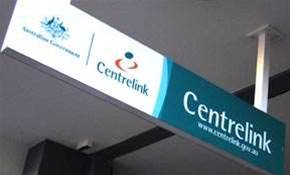The Department of Human Services expects to save $980 million over the next three years by expanding its controversial "robo-debt" data matching process to capture more types of income.

Despite the criticism surrounding the accuracy of the program, DHS plans to push ahead with an expansion that will see assets and investments included in the data matching.
Since last September the DHS has been matching records of income provided to the agency with wages declared to the Australian Taxation Office to check for discrepancies.
From July 1, it will expand the program to cover rental income, interest on term deposits, dividends, and other assets and investments. The expansion has been criticised as unfairly targeting pensioners.
DHS representatives told a hearing of a senate inquiry into the program yesterday that the expansion was expected to reap $980 million over three years.
The agency said it made $70 million more than expected in the first year of the data matching drive.
The program has been criticised for its accuracy levels and heavy-handed approach. DHS officials yesterday admitted it was difficult to tell whether an individual had been employed in a financial year if specific periods of employment weren't detailed by the ATO.
Once a discrepancy is identified between ATO and DHS records, the agency sends out an "initial clarification letter" - what many who received the letters have taken as a debt notice - to prompt the individual to address the gap.
These letters were previously automated. With the program expansion, the agency will now manually check discrepencies in matched records before sending out letters, it said.
Senate committee member and Labor senator Murray Watt called on the government to halt the expansion of the program.
"No one has been able to convince this inquiry that this system has been running so smoothly that we aren't going to see a whole bunch of new problems emerge on July 1 with this expansion, with a particularly vulnerable group of Australians being older people," he said.
He said while the agency had demonstrated improvements to the wider debt repayment program - including waiving 10 percent debt recovery fees and giving people more time to pay - it was still highly problematic.
"There are still very deep flaws and very grave doubts about the validity of the system and the government should put it on hold until it's sorted out," he said.
Protocol
The protocol [pdf] underpinning the data matching program was today revealed after many attempts by journalists and legal and human rights representatives to access the document.
One common complaint with the system is that Centrelink averages payments into fortnights even though the ATO only deals with annual payments, causing big problems for seasonal workers who only earn income for part of the year.
The protocol - which was attached to a response from the Privacy Commissioner to questions about the program - reveals DHS never attempted to match fortnight-to-fortnight payments, meaning the system incorrectly assumes all income recorded in a single year has been earned evenly over 26 fortnights.
"Information is extracted from the DHS Enterprise Data Warehouse for both current and the target financial years," the protocol states.
"Algorithms are applied to this data to calculate totals for each financial year required."
The agency is not required under voluntary data matching guidelines to confirm the validity of the matched results before relying on them to take administrative actions against an individual.
It is, however, required to notify the individual of a match and allow them to respond, and, under privacy law, must take "reasonable steps"" to ensure personal information it uses is accurate and up-to-date.
The department said it expects to match each of the 7 million records in its Centrelink database over time.


_(22).jpg&h=140&w=231&c=1&s=0)

.png&h=140&w=231&c=1&s=0)
_(20).jpg&h=140&w=231&c=1&s=0)





 iTnews Executive Retreat - Security Leaders Edition
iTnews Executive Retreat - Security Leaders Edition











_(1).jpg&h=140&w=231&c=1&s=0)



